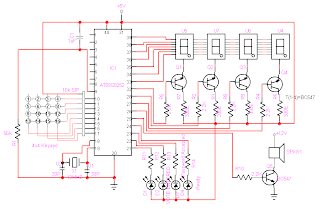The 555 timer [8 pin] IC simply makes a noise. It’s coupled via C4 [electrolytic] to modulate the MRF transistor oscillator. With C1 set at roughly 1/3rd, you will be close to 900 MHz. By sweeping the C1 trimmer capacitor, you can swing the output frequency from 800 MHz to 2 GHz with the transistor and values shown.
You could replace the 555 chip with an electret microphone and listen to yourself talk on a scanner, so the unit could easily couple as a UHF Bug.
Instead of a single Tapped Coil, I’ve used two molded inductors for ease of construction.Values for C1,C2,L1,L2 are critical for the frequency range.
You might want to build the unit into a metal box, add an on/off switch in the batteries + line, and maybe even add a LED. Connect an old 800 MHz cell phone antenna to C5.
Would you believe the whole thing can be built on top of the 555 IC itself when using surface mount components, and the lot will fit onto a nine volt battery clip. Output is reasonably good, although the current drain is a bit high, so a new 9 Volt battery will only run about an hour.
The “Cell Kill Distance” is around 10 – 15 feet, ample for most purposes.



























